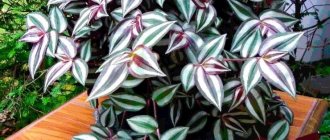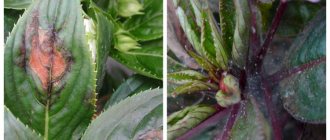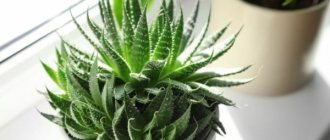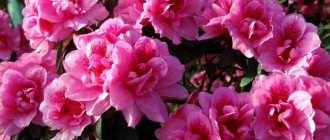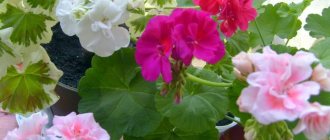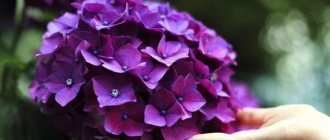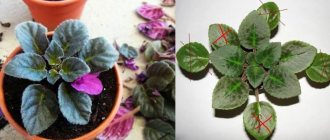Brief description of the flower
In appearance, it is a small bush with erect stems, on which branches with oval leaves, pointed at the base, are densely located. Balsam flowers have irregular shape and texture: there are double and smooth types, solitary or collected in inflorescences. In addition, they have a varied color palette, depending on the type they can be: white, red, pink, orange, coral, or combine two or three colors at the same time. That is why the second name of the home flower is “light”. People also call balsam “Vanka wet” for its love of moisture. In inclement weather, in rain and fog, it really becomes wet - droplets of water, sweet to the taste, form on the sharp edges of its leaves.
In addition to the above, we advise you to read the article about Balsam. It contains information about signs, what it is also called, the characteristics of the plant are given and the most popular varieties are described.
There are several ways to plant balsam: cuttings, seeds, layering. In this article we will consider only one of them, which one - read below. It is worth watering your pet more intensively than other house plants, but you should not allow water to stagnate in the roots! We recommend watering it every one to two days in the summer, and twice a week in the winter.
Planting balsam from cuttings
This plant is absolutely unpretentious, so it is ideal for beginning gardeners. An excellent method of propagation that preserves 100% varietal characteristics is balsam cuttings. There are several vegetative methods for propagating balsam by cuttings:
Rooting in water
We cut off the top of a healthy bush, approximately 8-10 cm with 2-3 internodes (the branch should not have flowers or buds), then remove the lower leaves and place them in a container with water (do not immerse the leaves in water to avoid rotting). Leave the cuttings in a bright, warm place. In 10-14 days it will give roots. Now it can be planted: a small pot with the following contents is suitable for this - compost, humus and turf soil in equal parts. Also, you should not get carried away with abundant fertilization of the seedling, since in the best case, its leaves will grow, to the detriment of flowering; in the worst case, the flower may die completely. You should also be careful with watering: it is best to water along the edge of the flowerpot or into a tray, excluding direct contact with water on the trunk of the plant, as this is fraught with rotting. If you notice that the flower is withering, the flowers and buds are falling off, then most likely this is a signal of insufficient moisture or high water hardness. For irrigation, use settled water at room temperature. Hard water makes the soil overly alkaline, which leads to various types of diseases. A high concentration of alkali can be determined by seeing limescale deposits on the soil surface. In this case, to resuscitate the plant, you just need to update the top layer of soil.
Rooting in the ground
We select a healthy branch with two or three nodes and, having broken off the lower leaves on it, we ground it by about a third. A substrate consisting of 25% peat, 25% vermiculite and 50% perlite is suitable for this. The use of peat provides nutrition, and a mixture of vermiculite and perlite allows you to qualitatively improve the characteristics of the soil: its looseness and breathability increase; clumping and crust formation on the surface are prevented, which allows roots to develop evenly; in addition, vermiculite prevents overheating or hypothermia of the soil. In order for the cuttings to take root well, you need to ensure that the soil is moist. To improve the saturation of the soil with oxygen, do not forget to loosen the soil occasionally, to a depth of approximately 1 cm. Another subtlety: to speed up the germination of the seedling, you can create a greenhouse for it. To do this, cover the pot with the indoor plant with cellophane or plastic wrap and place it in a warm, bright place. With proper care, the cuttings will take root within a week!
Balsam diseases and their treatment
Impatiens, like all indoor plants, are susceptible to various diseases - viral and fungal. The most common are:
1. Mosaic – spotted oppression viruses. The disease is noticeable by deformed leaves of the plant, yellow spots on them, wilting stems and stunted flower growth. The plant is infected by insect pests. The disease can be eliminated using insecticides.
2. Gray rot is a fungal infection. Its appearance is visible by brown spots on the leaves, white bloom and limp stems. Infection occurs when the plant is not properly cared for.
Treatment is carried out with antifungal agents - fungicides and proper care of the bush. Usually the fungus attacks the soil, so it is better to transplant the bush into new, clean soil.
By the way, look at the previous article. There is a lot of useful information for you - Unpretentious and shade-loving indoor plants.
3. Bronzing is a viral disease that cannot be treated. The disease can be seen by wilting leaves and stems, deformation of leaves, and the formation of holes of different sizes on them.
Bacteriosis is a very dangerous disease, so the bush must be destroyed immediately so as not to infect other plants.
To prevent infection, it is necessary to ventilate the room frequently.
4. Powdery mildew is a fungal infection that often develops in the soil of indoor plants. The disease is noticeable by the wilting of the bush, the appearance of a whitish-brown coating on the leaves and their curling into tubes.
Please take a look at the following article. It contains more useful information - Yucca: home care, propagation and transplantation.
Treatment with solutions of copper sulfate, soap solution, and soda ash helps. It is necessary to feed the bush with phosphorus-potassium fertilizers.
These are almost all balsam diseases that must be quickly eliminated so that the bush does not suffer and the disease does not spread to other plants.
Balsam treatment. Video:
BALMING flower treatment
When is the best time to take balsam cuttings?
If you want to get a formed flower by summer, then it is best to take cuttings in the spring. By this time, the cuttings will germinate, take root and be ready to flower. It is best to carry out cuttings in March. This is a sunny spring month, when everything in nature comes to life and blooms; our shoot is no exception; bathed in the sun’s rays, it will germinate faster and will not stretch out much. In order for Balsam to continue to please you, it is not enough to simply propagate it; you need to know the conditions of its maintenance and the rules of care, as well as be prepared to deal with its pests and know how to deal with possible diseases.
Pests and Vanka wet
In order not to fight pests in the future, constant plant prevention is required. Here are some tips:
- Follow the rules for maintaining the plant, avoid overwatering and drying out the soil;
- Monitor air humidity;
- Constant inspection of the plant to identify pests in the early stages.
What insect pests can annoy balsam. These are primarily spider mites, thrips, whiteflies and aphids.
If the leaves of the Impatiens begin to dry out, there is practically no color, the plant looks depressed, it means that one of these pests has settled on your flower. What to do?
- The pest needs to be identified.
- Remove all damaged parts of the plant.
- Transplant into a new substrate.
- Treat with insecticides (Fitoverm, Natur Gard, Golden Spark, Gaupsin).
Beautiful and at the same time easy to maintain, Balsam will delight owners with its bright and cheerful appearance all year long, subject to its maintenance and timely response to plant problems.
We analyze all the important points regarding the propagation of balsam by cuttings
Even a novice florist is at least generally familiar with propagation by cuttings.
Another question is that this method is not suitable for all plants, and when working with others there are rules and prohibitions.
Today we will talk about balsam cuttings. How to do this correctly in order to ultimately get a full-fledged young plant, and we will also learn how to properly care for the plant after planting and what growing problems you may encounter.
Indoor balsam: general information
This plant is represented by a wide variety of varieties that differ in size, shape and color. The height of the plant can grow from 15-20 to 45-50 cm. The leaf of this popular flower has wavy edges and is quite fleshy, its color varies from rich green to red-green and bronze.
The flowers of the plant are located in the axils, and their color can be so diverse that there are all kinds of shades of red, pink, purple, and orange. New varieties with spots and stripes on flowers, with leaves of different colors, and varieties with double flowers have also been developed. Therefore, in all this diversity it is very easy to get confused when choosing a balsam.
The flowers of the plant are located in the axils
In place of flowers that have bloomed, green boxes are formed, inside which seeds ripen. A feature of such boxes, due to which the plant is popularly called impatiens, is their ability to burst and scatter the seeds at the slightest touch.
Impatiens are found in perennial varieties that are grown indoors. There are also annual varieties that feel great on balconies, in flower pots, and in flower beds. Typically, these varieties are adapted to lower temperatures and bloom from spring until autumn. So this cutie can definitely decorate your home.
There are all kinds of shades and colors: red, pink, purple, orange
Remarkable! Wet Vanka is perfect for rooms where children are, so it can be found quite often in schools and kindergartens.
Any flower lover will understand how to care for balsam. You just have to follow the basic simple rules, and the plant will thank you with lush and colorful flowering.
Description of the plant
Indoor balsam stands out for its very lush and long-term flowering. Its small, 4-6 cm in diameter, flowers are white, yellow, red, as well as bicolor, and can be simple or double.
The stems are dense, juicy, and have short internodes. The leaves cover the stem abundantly and have a regular shape with a smooth or serrated edge. The color spectrum of the leaves includes various green shades.
Compact bush : dwarf varieties - up to 25 cm, others - about 40 cm.
The geographical homeland of balsam is Africa, Asian countries.
Therefore, in mid-latitudes, planting in open ground is possible only in the warm season. However, more often it is used as a houseplant.
How to propagate at home?
- Seeds. The process is long and painstaking, since balsam seeds do not germinate well, and most of the sprouts die at the initial stage. Their germination requires special conditions. In addition, the result may not please you. After all, most varietal plants do not give their seeds all their characteristics. The result may be a plant with simple flowers.
- Cuttings. The most optimal and effective method. With its help, you can easily and quickly obtain a new balsam plant that matches the characteristics of the donor plant. This method is not suitable only for annual balsam.
General rules for cuttings
Let us consider in detail how to take cuttings and what conditions must be provided for a good result:
- Time. It is recommended to cut garden balsams at the end of summer, but this can be done at any time, except during the period of bud formation and active flowering.
Preparation
How do we prepare planting material:
- Using a sharp knife, cut off a shoot with a tip 8-10 cm in length.
- You need to cut under the leaf, at an angle of 45 degrees.
- There should be no buds or flowers on the cuttings.
- There should be 2-3 internodes on the shoot.
- We remove the lower leaves, leaving 4-6 on the top.
Rooting in water
Impatiens grow roots in water, so you can simply put the cuttings in water. The bare stem should be immersed; the leaves should not touch the water. The glass with cuttings should be placed in a warm, bright place until the roots sprout. After one and a half to two weeks, the seedling is ready for planting in a pot for permanent residence. You can add a stimulant to the water, for example, root.
Landing in the ground
The cuttings with the roots obtained in water are planted in a small pot with fertile soil. Drainage must be placed at the bottom of the pot. Rooting in the ground Another method of rooting is in the ground. This method requires a special soil composition. A mixture of peat, vermiculite and perlite in a ratio of 1:1:2 is recommended.
But you can mix sand and peat in equal proportions. Place soil in a small container and moisten it well. The shoot is placed in the soil for a third of its length. The soil is pressed well against the cutting. The container with the seedling is covered with a plastic bag. It should be kept in a warm, bright place and ventilated periodically.
Transplantation to a permanent place
If everything went well, the cuttings, planted for rooting in the ground, will be ready in a week. In a plastic cup, the roots can be observed through the walls. In any case, after a couple of weeks you can transplant it to a permanent place of residence. Soil, container and drainage have already been discussed.
We talked in more detail about the intricacies of planting and subsequent care in this article.
Choosing a pot and preparing the soil
- Which pot is better to plant a flower in? It is better to choose a small size. In a spacious pot, your plant will begin to grow green mass and root system, but will not delight you with flowering. When replanting an adult plant, take a flowerpot half the size of the crown of your balsam. Expanded clay is placed on the bottom, a layer of 2-3 cm. Buying a ceramic or plastic pot is not important. Impatiens feels good in a “house” made of any material.
- Choose fertile but light soil - it is advisable to take a mixture of leaf soil, peat, humus, turf soil, sand. Proportions 1/1/1/1/1. You can buy ready-made soil for flowering indoor plants, which contains all these components. The soil for balsam should be slightly acidic. Avoid soil rich in nitrogen.
What to do after?
Now let's talk about how to care for a young plant after rooting, what conditions need to be provided to it:
- Impatiens loves sunlight , but soft, not scorching. A south window sill is not suitable for it; it is better to place it in a room close to the window. If there is insufficient consecration, flowering may not occur.
- The temperature for Vanka wet should be normal room temperature. Sudden changes and drafts are not welcome. In winter, a slight decrease is permissible, +12 is the minimum lower limit for balsam.
- Impatiens need abundant watering , the soil must be constantly moist. However, the young plant should be watered carefully at the initial stage. It doesn't use much water yet. You can destroy a flower by flooding it. In winter, watering is reduced, but the soil should still not dry out.
- In summer, the plant can be placed on the street or balcony. The place must be protected from sudden gusts of wind. Staying outdoors has a beneficial effect on the appearance of balsam. The bush becomes more lush and blooms better.
- Like all flowering plants, balsam needs fertilizing with mineral fertilizers. Such care measures will give the plant strength for long and lush flowering. The flower is fed from the beginning of spring until the end of flowering with fertilizer for flowering plants every 10-14 days. After transplanting a young seedling to a permanent place, fertilizers can be applied after 2-3 weeks, as soon as the balsam adapts to the new place. Read here how to water and what to feed this plant for abundant flowering.
When you replant balsam into a new pot, almost the entire volume should be occupied by its roots, only a small distance near the walls of the pot should be filled with new soil. A pot that is too large will result in no flowering this year.
- Plant formation. Too long shoots are pinched to get a more lush bush. Remove excess branches, faded buds, wilted leaves, constantly maintaining the appearance of the balsam in the required quality. Pinching promotes the formation of more flowers. But too large a affected area can stress the plant.
Read about the features of caring for balsam at home here, and you will find all the nuances of growing and propagating at home in this article.
Care and cultivation
Impatiens is an unpretentious, hardy flower. And you have to try hard to ruin your favorite copy. But still, it also has some requirements that should be taken into account when growing at home.
Location and lighting
With a great love for light, balsam can live on any windowsill. But it’s best if it’s on the east side. In summer, it is advisable to remove the plant from direct sunlight so that the leaves do not get burned. In winter, the light, on the contrary, should be placed on the south side.
This handsome guy loves fresh air and will not mind ventilating the room. Only in this case it will need to be temporarily removed since it cannot tolerate drafts.
If the flower is given favorable care indoors in winter with the help of artificial lighting, then the balsam will delight you with lush blooms all winter.
Temperature
Having a tropical past, balsam has an extremely negative attitude towards cold. It is advisable that in winter the temperature in the room where the flower stands is within +12-+14 degrees. In summer, wet Vanka will easily tolerate +25 and above.
Humidity
Air humidity is not so important for Ogonyok. But if the air temperature rises above +25, especially in winter, then spraying the plant and monitoring the condition of the soil is required. The earthen clod must not be allowed to dry out.
Watering
Many Ogonyok owners are interested in the question “How to water a flower in winter?” It’s very simple, moderate watering, once or twice a week, after the top of the soil has dried out.
In summer, at elevated temperatures, water abundantly 3-4 times a week. But only after the top layer of the substrate has dried. In this case, it is necessary to ensure that the water does not stagnate in the pan.
Rule: “It’s better to underfill than overfill.”
Top dressing
During the period of active growth and abundant flowering, and this is the time from March to November, you need to help the balsam and feed it once every fourteen days with complex fertilizers for flowers. From December, it is advisable to reduce the amount of fertilizer applied to a minimum. And as soon as it gets warmer, the plant begins to grow again, switch to the usual feeding regime.
Trimming
In order for Impatiens to delight you with its lush flowering and well-formed bush, it should be pruned from time to time. This is especially true in the spring. After winter, the indoor plant naturally becomes elongated, a stem is exposed somewhere, or it simply requires stimulating pruning for the growth of side shoots.
Tip: Throughout the growing season, the flower can be formed by cutting off unnecessary branches.
Transfer
From the end of February to the end of March, Impatiens should be replanted. To replant, you will need a pot 2-4 cm larger than the previous one. The soil is taken nutritious, purchased for flowering plants. You can, of course, prepare the soil mixture yourself. But why, if there are ready-made substrates. Expanded clay or other material suitable for the drainage layer is placed at the bottom. The soil is poured, the plant is placed and sprinkled. Watering is required.
Advice: You should not take a pot of large diameter, because the root system of the plant will begin to take over the pot to the detriment of flowering.
Possible problems
Unfortunately, sometimes mistakes happen and things don't work out. Let's look at the most common troubles and methods for eliminating them:
Impatiens cuttings for the garden twice a year: at home and in the country
We have been cutting balsam (Vanka wet) for the purpose of propagating it for the garden for many years now, twice a year: at home at the end of February and in May at the dacha.
CONTENT
- Impatiens in garden design in a suburban area.
- Balsams brought home for the winter.
- Impatiens cuttings at home.
- Cuttings of balsam in a summer cottage.
Balsam is also popularly called “Vanka wet” because of the droplets of moisture that form on its leaves and “touch-me-not” due to the cracking of fruits and scattering of seeds when touched by the plant.
Impatiens in the design of a garden in a suburban area
Both at home and in the countryside, balsam always pleases owners with its rich flowering for a long time. In the area, balsam blooms from early summer to late autumn.
Here are some photos from the site. One of them shows the still quite active flowering of balsam in the fall next to the maiden grapes that have already turned red in October.
Impatiens thrives both in small pots that are mounted on walls and in large plastic and concrete flowerpots.
For good growth and active flowering, in addition to fertilizing, balsam needs to select neutral or slightly acidic soil.
If plants are planted not in plastic containers, but directly in self-made concrete flowerpots, then it must be taken into account that they will affect the acidity of the soil due to their alkaline component.
We have already talked about this during the construction of the alpine hill and the selection of the necessary soil for it.
To compensate for the alkaline component of cement, peat can be added to the ground, and a layer of pine or fir cones can be placed on the bottom of the flowerpot. They will additionally create drainage and less soil will be washed out of the concrete vase.
During the dry period, abundant watering is especially necessary, then the plants will not turn yellow and dry out.
In the fall, before the season closes, we take some of the balsams with especially beautiful flowers home to a city apartment for the winter.
Propagation by seeds and cuttings for open ground
Impatiens will serve as a wonderful decoration for any flower bed. It blooms from late June until frost. In the fresh air, balsam feels great. The plant is an annual plant, seedlings are planted every new spring.
You can get seedlings in two ways:
- When using balsam seeds, sowing is done in March or April. Seedlings can be planted in a permanent location after the threat of frost has passed. The ideal temperature is above +15 +17 degrees.
- The second option is to grow seedlings from balsam cuttings. Young shoots are also rooted in April, and at the beginning of summer they are arranged in a flower bed.
When choosing a place for planting, keep in mind that balsam is a rather delicate plant, it is better to protect it from the scorching rays of the sun. But it is better not to plant balsam in the shade either. The flower needs morning sun, and in hot afternoons it is better to shade it.
When and how you can get seedlings and what problems may arise when propagating balsam, you can find out in our material.
Balsams brought home for the winter
At home, balsam brought from the dacha overwinters well on the windowsill along with other indoor plants. Balsam does not require special care conditions. From time to time the plants bloom and grow significantly over the winter.
This allows you to take balsam cuttings after the next flowering, around the end of February.
A couple of weeks after this operation, the plant grows again and begins to bloom profusely (see photos).
Impatiens cuttings at home
For cuttings of balsam, brought from the dacha and surviving the winter on a warm windowsill, we use its longest branches.
We cut cuttings 10-15 cm long. We make the cut as usual under the leaf node from which the roots will form.
We leave a few leaves on the top of the cuttings. We remove all flowers, buds and lower leaves.
Fill a glass jar with water to about one third and add any stimulant for better root formation.
The photographs below show balsam cuttings 2-3 weeks after formation.
The roots of the balsam are clearly visible. In the near future it will be possible to plant cuttings in pots with soil for indoor plants.
Of all the balsams, the most unpretentious ones are those with dark pink flowers, and the most capricious ones are those with white ones.
If during root formation the jars with cuttings are not covered with plastic bags, then it is necessary to constantly spray the cuttings over the leaves with water from a spray bottle.
This may be more labor-intensive, but there is a guarantee against possible rotting of the cuttings. It can occur under the film with insufficient ventilation.
Carrying out the procedure: step-by-step instructions
- To avoid damaging the rather fragile shoots of the plant, before replanting, thoroughly water the soil in the pot so that the soil can easily be separated from the walls.
- Holding the balsam at the root base, turn the pot over and remove the earthen lump.
- If there are old dry or injured roots, remove them.
- Lower the balsam into the prepared new pot with drainage at the bottom, holding it in the center.
- Sprinkle and compact.
- Water thoroughly again.
- For several days after transplantation, protect the balsam from bright sun.
